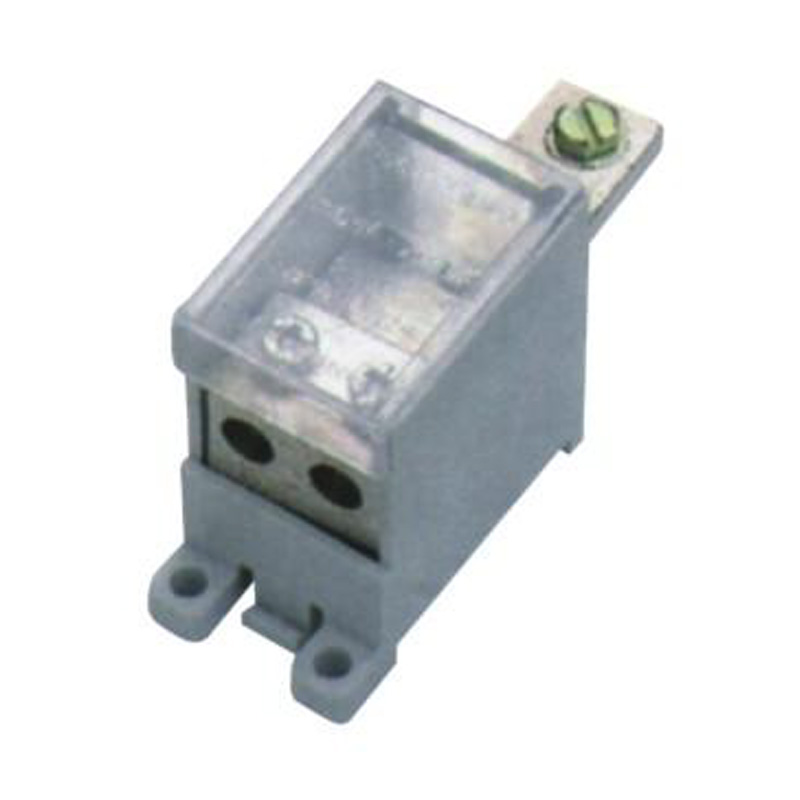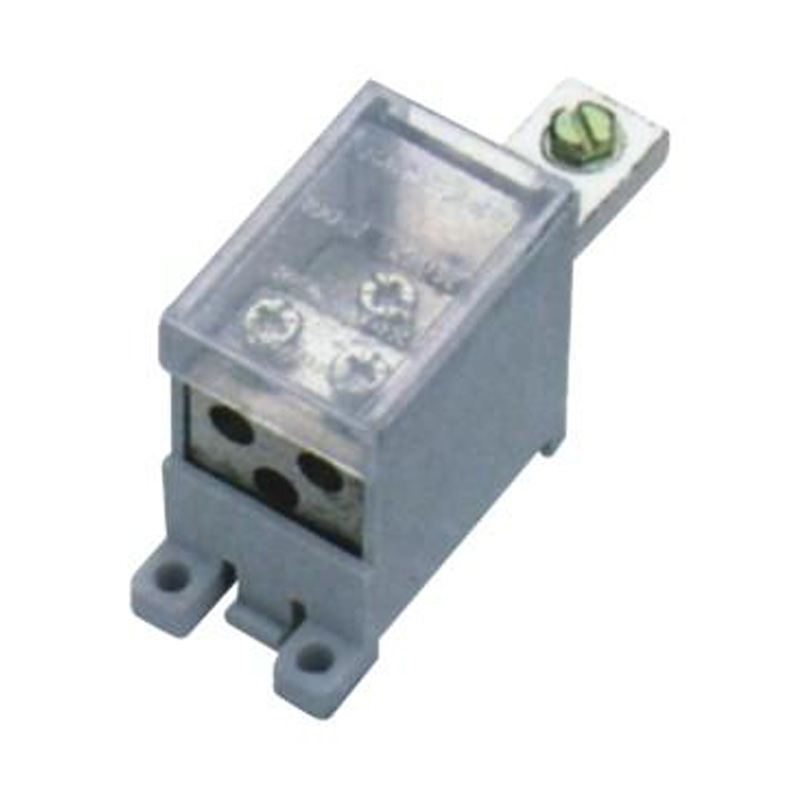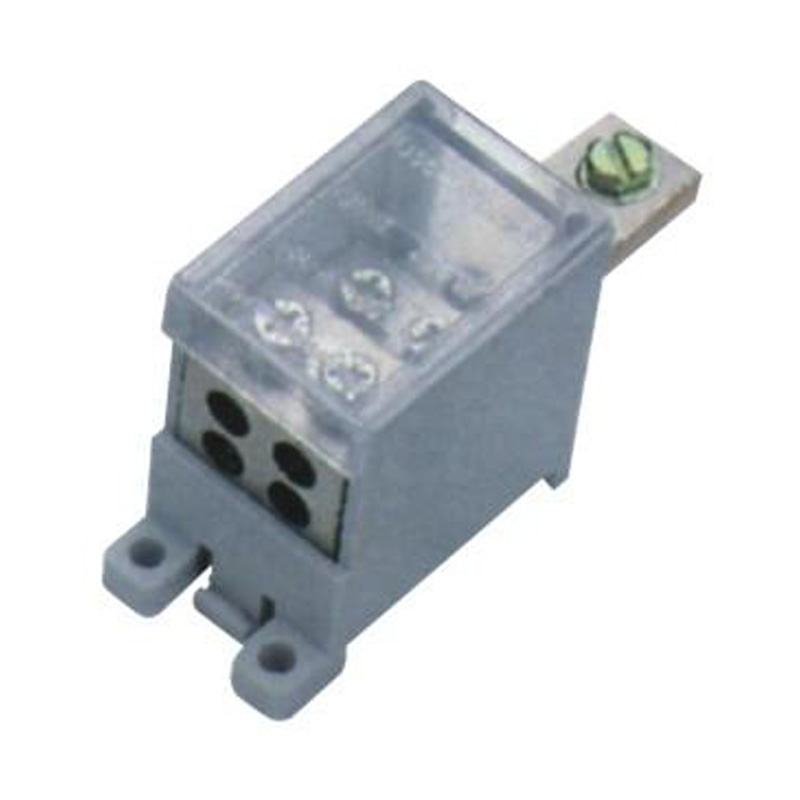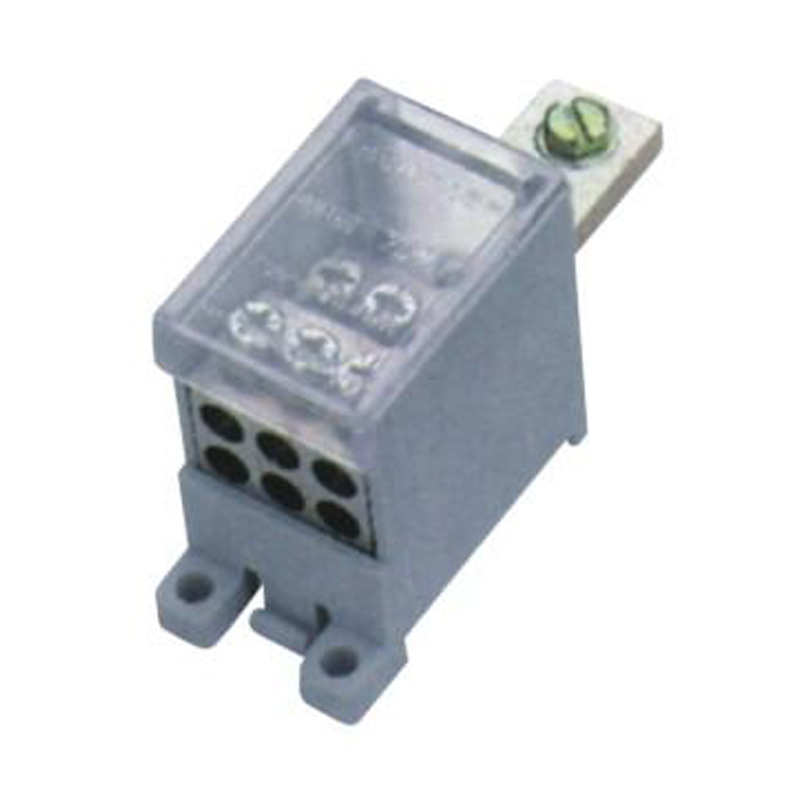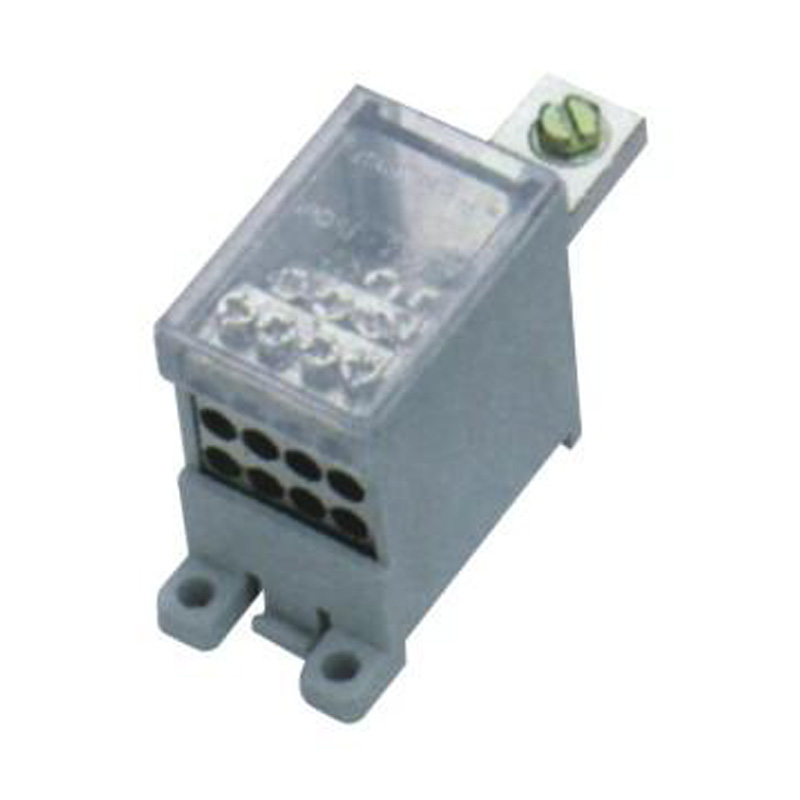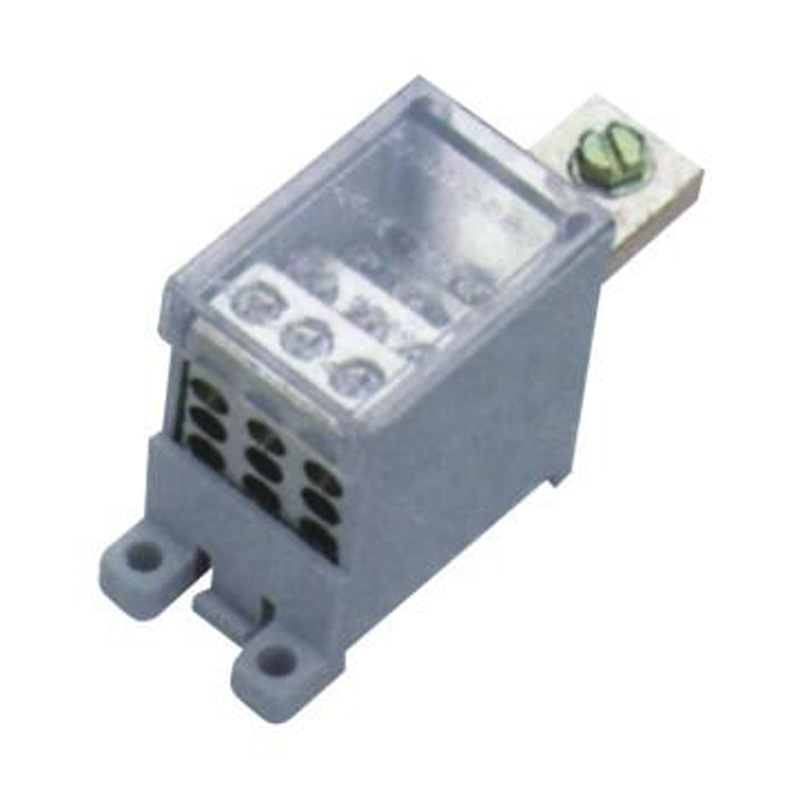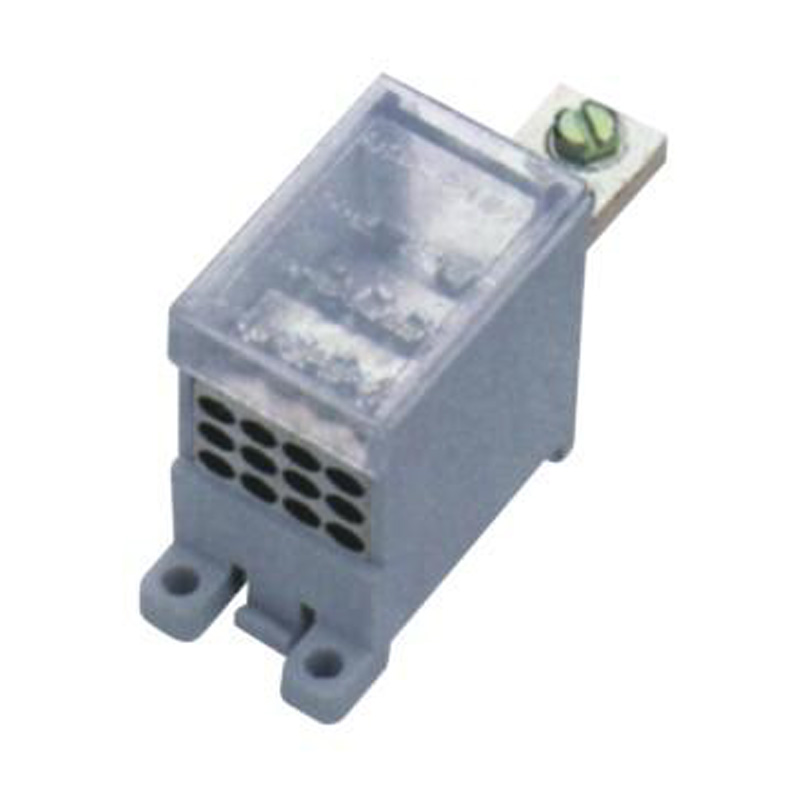In modern electrical control panels, a dual row terminal block combined with Din Rail Terminal Blocks provides an efficient soluti...
READ MOREIndependent Neutral Line Terminal Manufacturer
Independent Neutral Line Terminals are professionally used for providing dedicated and reliable connections for neutral conductors in electrical systems. These terminals are specifically designed to ensure the neutral line is securely and independently managed, making them essential for maintaining electrical safety and system stability in distribution boards, control panels, and other electrical installations.
These terminals feature an independent design that isolates the neutral conductor from other electrical connections, minimizing the risk of short circuits and ensuring accurate voltage balancing. The robust construction of Independent Neutral Line Terminals ensures durability and reliability, even under continuous electrical load and varying environmental conditions.
Independent Neutral Line Terminals are currently a reliable solution for managing neutral connections in electrical systems. They simplify the installation process by providing a dedicated and secure connection point for neutral conductors, enhance system safety and reliability through their independent design, and ensure consistent electrical performance. Their durable and secure design makes them suitable for a wide range of residential, commercial, and industrial applications where maintaining a stable and isolated neutral connection is essential for safe and efficient operation.
FJ6NB-100/10-35/2x25 Upper and Lower Row Neutral Line Terminal Block
FJ6NB-100/10-35/2x25
One-inlet, twe-outlet
Inlet wire:10-35mm²,outlet wire:1.5-25mm²
Order number:151000
FJ6NB-100/10-35/3x16 Upper and Lower Row Neutral Line Terminal Block
FJ6NB-100/10-35/3x16
One-inlet,three-outlet
Inletwire:10-35mm²,outletwire:1.5-16mm²
Order number:151001
FJ6NB-100/10-35/4x16 Upper and Lower Row Neutral Line Terminal Block
FJ6NB-100/10-35/4x16
One-inlet, four-outlet
Inlet wire:10-35mm²,outlet wire:1.5-16mm²
Order number:151002
FJ6NB-100/10-35/6x16 Upper and Lower Row Neutral Line Terminal Block
FJ6NB-100/10-35/6x16
One-inlet, six-outlet
Inlet wire:10-35mm²,outlet wire:1.5-16mm²
Order number:151003
FJ6NB-100/10-35/8x10 Upper and Lower Row Neutral Line Terminal Block
FJ6NB-100/10-35/8x10
One-inlet, eight-outlet
Inlet wire:10-35mm²,outlet wire:1.5-10mm²
Order number:151004
FJ6NB-100/10-35/9x16 Upper and Lower Row Neutral Line Terminal Block
FJ6NB-100/10-35/9x16
One-inlet, nine-outlet
Inlet wire:10-35mm²,outlet wire:1.5-16mm²
Order number:151005
FJNB-100/10-35/12x10 Upper and Lower Row Neutral Line Terminal Block
FJNB-100/10-35/12x10
One-inlet, twelve-outlet
Inlet wire:10-35mm2,outlet wire:1.5-10mm2
Order number:151006
Search
Categories
-
Energy Measuring Terminal Block(314)
- Energy Measuring Joint Terminal Block(16)
- Polycarbonate Energy Measuring Terminal Block(24)
- Standard Wiring Energy Measuring Terminal Block(4)
- Transparent Shell Energy Measuring Terminal Block(6)
- Multifunctional Test Energy Measuring Terminal Block(10)
- Intelligent Safety Energy Measuring Terminal Block(6)
- Single-Phase Multi-Circuit Output Terminal Block(12)
- Self-Elevating Metering Box Terminal Block(7)
- One Household One-Meter Meter Box Dedicated Terminal Block(56)
- Three-Phase Metering Box Dedicated Terminal Block(24)
- Repeatable Grounding Line Terminal Block(20)
- Terminal Block for One-Inlet Multi-Outlet Metering Box(15)
- Closed Terminal Block(11)
- Heavy Current Terminal Block(48)
- Self-Boosting Terminal Block(5)
- Intelligent Self-Locking Terminal Block(3)
- Tool-Free Crimping Type Terminal Block(5)
- Wide Range of Wire Diameters Terminal Block(5)
- Combined Type Energy Measuring Terminal Block(37)
-
Switch Terminal Block(55)
- Pin-Type Incoming Line Switch Terminal Block(4)
- Multi-Way Connection Switch Terminal Block(4)
- Plug-pin Switch Terminal Block(7)
- Combined Type Switch Terminal Block(7)
- High Contact Cross Section Switch Terminal Block(7)
- Wide Range Switch Terminal Block(11)
- One Way in Switch Terminal Block(12)
- Equipped with Circuit Breaker Switch Terminal(3)
-
Heavy-current Terminal Block(631)
- Modular Building Block Terminal Block(156)
- Spherical Non-Destructive Crimp Terminal(120)
- Dual-Mode Connection Electrical Terminal(90)
- Anti-Electricity-Theft Terminal Block(74)
- Convenient Connection Terminal Block(12)
- High-Contact Section Terminal Block(12)
- Wide Range of Wire Diameters Neutral Line Terminal(9)
- Heavy-Current Neutral Line Terminal(9)
- Upper and Lower Rows of Neutral Terminal(2)
- Independent Neutral Line Terminal(7)
- Nose-Type Neutral Line Terminal(7)
- Rail Type Neutral Line Terminal(9)
- Fixed Neutral Line Terminal(12)
- Double Rail Assembly Electrical Terminal(19)
- Blue Jack-Up Terminal(6)
- Black Base Copper Bar Terminal(5)
- Compact Terminal Block(16)
- Precision Terminal Block(23)
- U-Shaped Harpoon Terminal(2)
- Grounding Metering Box Terminal Block(12)
- High-Performance Terminal Block(19)
- Multifunctional Terminal Block(10)
- Din Rail Terminal Block(76)
- Watt-hour Meter Connector(49)
-
Energy Meter Accessories(116)
-
-
As electrical systems become more advanced, the demand for more reliable, durable, and efficient components grows. Connectors Term...
READ MORE -
Ensuring that connector terminals are properly installed is critical for the long-term performance and reliability of any electric...
READ MORE -
Selecting the correct terminal is essential for the stability and efficiency of any electrical system. For professionals in the el...
READ MORE -
Electrical systems rely on high-quality components for safe, efficient, and reliable operation. One such crucial element is the co...
READ MORE -
Using the right junction box and circuit breaker block junction box can bring more than safety — it can significantly improve inst...
READ MORE
How to Choose an Independent Neutral Line Terminal?
Independent neutral line terminals provide a clear and separate connection point for neutral conductors within an electrical system. Choosing the right one depends on several practical considerations.
Capacity And Size
The terminal must accommodate the cross-sectional area of the wires to be connected, ensuring a secure and reliable fit. Using an undersized terminal can loose connections, while an oversized one may not provide the necessary clamping force.
Material Quality
Independent neutral line terminals are often constructed with conductive metals such as copper alloys, paired with insulated mounting bases. Selecting a model with corrosion resistance helps maintain conductivity over time.
Installation Style
Some terminals are designed for DIN rail mounting, while others fit directly into distribution panels. The choice depends on the layout of the system and ease of maintenance.
Safety features like clear labeling and insulation barriers are important. A well-designed independent neutral line terminal not only organizes conductors but also supports safer and more manageable wiring practices.
What are the Advantages of Brass Neutral Terminal Block Materials?
Brass neutral terminal blocks are common in distribution systems because brass combines strength, conductivity, and durability in a single material. These qualities give them several advantages over alternatives.
Electrical performance:Brass has good conductivity, ensuring minimal resistance at connection points. This helps reduce power loss and prevents localized heating, which is important in maintaining system efficiency.
Mechanical strength:Brass is tougher than many other conductive materials, meaning it can withstand the repeated tightening and loosening of screws during installation or maintenance. This durability reduces wear and extends service life.
Corrosion resistance: In environments where moisture or mild chemical exposure is possible, brass resists degradation better than plain steel. This helps keep connections stable over the long term.
Brass terminal blocks are cost-effective compared to higher-grade metals like pure copper. They balance performance and affordability, making them a reliable choice for both residential and industrial use.
For these reasons, brass neutral terminal blocks continue to be widely used as a dependable solution for organizing and securing neutral conductors.
What are the Differences Between Dual Row Terminal Blocks and Others?
Dual row terminal blocks differ from single row or other styles by offering two parallel rows of connection points. This design provides unique benefits and sets them apart from standard terminal blocks.
Higher wiring density:With two rows, more connections can be made in a smaller footprint. This is particularly useful in control panels or machinery where space is limited and multiple connections are needed.
Organization:Dual row blocks make it easier to group related conductors, such as input and output lines, or signal and return paths. This layout improves clarity for both installation and troubleshooting.
In terms of versatility, dual row terminal blocks often support bridging accessories that allow connections between rows or across multiple blocks. This feature is not always available in simpler designs, giving dual row blocks greater flexibility in complex circuits.
Installation efficiency; By reducing the need for multiple single row blocks, dual row designs save assembly time and help keep wiring neat.
While single row terminal blocks are sufficient for straightforward connections, dual row versions provide a more space-efficient and organized solution for systems with higher wiring demands.



 English
English Español
Español عربى
عربى